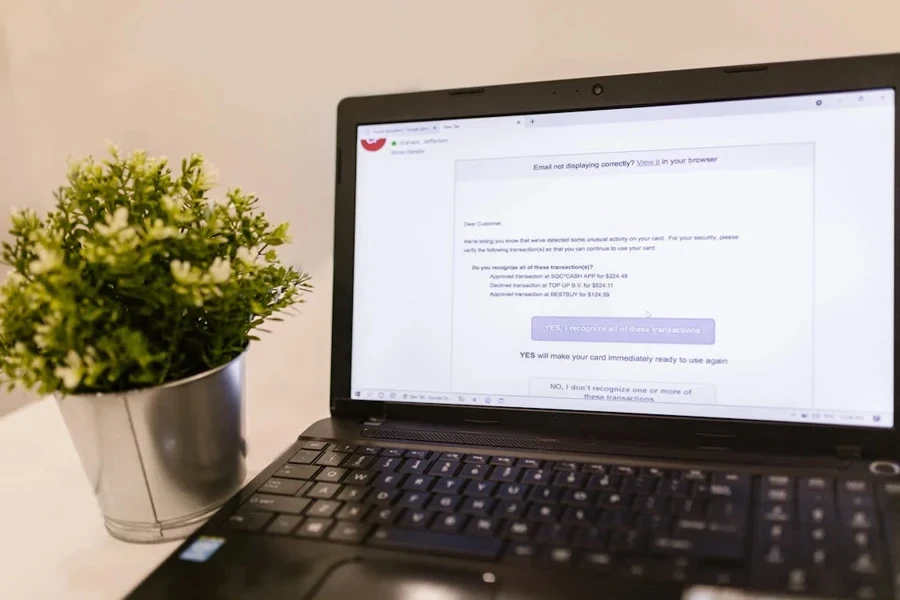Imagine you’ve nailed that perfect email—a strong opener, a clear message, and a call to action that’s bound to get a response from potential consumers. But before businesses hit “Send,” there’s one final touch they mustn’t miss: a great sign-off.
Email is still the go-to for workplace communication, and how brands wrap things up matters as much as what they want to say. A thoughtful email closing shows professionalism and attention to detail while setting the right tone. This article will discuss the best and worst ways businesses can end their emails.
Table of Contents
What are email sign-offs?
What businesses should include in every email sign-off
The types of email sign-offs
How to end an email: 10 ways to sound professional
How not to end an email: 10 sign-offs to avoid completely
Wrapping up
What are email sign-offs?

An email sign-off is the final touch at the end of a message. It’s usually a simple word or short phrase followed by a name and signature. Think of it as the signal that says, “We’re done here.”
Businesses must include email sign-offs in almost every email they send. They’re a key part of business communication, and using the right one shows the recipient the brand understands the basics of email etiquette. Plus, it helps leave a professional impression.
What businesses should include in every email sign-off

Every email sign-off needs three key things:
- A farewell
- Signature
- Contact info
The farewell is the word or phrase that comes right before the sender’s name, and it’s more important than most people think. The farewell section sets the email’s tone and shapes the reader’s feelings about the received message. Here are some examples of email farewells (the next section will show more options):
- Sincerely
- Talk soon
- Best regards
Next is the sender’s signature. If the sender already has a professional email signature, they won’t need to type their name again after the farewell. But if they don’t have one, they must include their name and other relevant contact details, like a phone number or social media handle. That way, the recipient can reach the sender through other channels if necessary.
What’s a professional email signature?
An email signature is like a digital business card. Senders can set it up to automatically appear in every email or just for certain people, like those outside the company. Usually, it includes a full name, job title, phone number, LinkedIn profile, and office address.
However, senders can get creative too. Some people add an inspirational quote or a headshot to make the email signature more personal. It’s a quick and easy way to share more info about the sender and how people can reach them without typing it out every time.
The types of email sign-offs

1. General email sign-offs
Most emails wrap up with simple, general sign-offs. These quick phrases are not tied to anything specific about the email’s target or content—they are just a friendly way to close things out. Here are a few examples of these kinds of sign-offs:
- Thank you for your interest
- Regards
- Have a great day
2. Personalized email sign-offs
Sometimes, a personalized sign-off is the way to go, especially when the sender is emailing someone they already know (whether it’s a personal or professional connection). Instead of generic sign-offs, these are more thoughtful and specific to the sender-recipient relationship.
For this reason, they’re usually short sentences that replace the typical closing phrase. Here are a few examples:
- I’m excited to get started on this project with you.
- I really appreciate all your hard work.
- Thank you so much for this opportunity.
How to end an email: 10 ways to sound professional

Email sign-offs for formal businesses
A good sign-off is key to wrapping up a professional email. These email closing phrases are perfect when senders reach out to people outside their organization (like prospective clients, vendors, or other partners.
They also work great for colleagues if the company or industry leans toward more formal vibes. Here are some go-to options:
1. Sincerely
This classic choice is a favorite because it closes things on a positive but formal note.
2. Regards
Whether it’s “Warm regards,” “Kind regards,” or just “Best regards,” each one is polite, clear, and stays perfectly professional.
3. Best wishes
A little more friendly than the others, this sign-off shows the sender genuinely wishes the recipient well without losing that professional tone.
Email sign-offs for informal businesses
When senders are emailing coworkers they know well or handling less formal business, these sign-offs work perfectly:
4. Cheers
A friendly and conversational way to wrap up an email—kind of like “Best regards,” but more relaxed.
5. Best
Short, simple, and works for almost any situation. It’s direct and gets the job done.
6. Take care
This sign-off shows warmth without going overboard. It’s a nice balance for a friendly yet professional close.
Email sign-offs for gratitude and requests
When senders want to ask for something via email or show gratitude for a favor, referral, recommendation, or opportunity, their sign-off can help wrap it up nicely. Here’s what they can use:
7. Thank you
Straightforward, simple, and gets the message across. No need to overthink it.
8. I appreciate your [input, help, input, etc.]
This sign-off adds a bit more warmth. It’s like saying, “Hey, I really value what you’re doing for me.” Perfect for follow-ups or reminders to keep things friendly and still nudge for a response.
Email sign-offs for casual conversation
Personalizing the sign-off often feels natural in casual conversations. But senders don’t always have to get fancy. They can use some great go-to sign-offs that work perfectly for friendly emails, including:
9. Talk soon
If the sender is planning to catch up with someone close soon, they can say this sign-off. It’s casual and simple and keeps the vibe light.
10. Catch you later
Kind of like “Talk soon,” but a bit more laid-back. It’s a fun way to say, “We’ll talk again soon,” without making it feel like a formal promise.
How not to end an email: 10 sign-offs to avoid completely

Since an email sign-off is like the final handshake, it must leave a good impression. For this reason, senders must avoid some sign-offs that can give the wrong vibe. Here are some closing lines to avoid.
1. Looking forward to hearing from you (thanks in advance)
This sign-off can feel a bit pushy or passive-aggressive. It’s like the sender assumes the recipient has to reply, which might not sit well with everyone.
2. Yours truly
Why use this sign-off if the sender doesn’t actually “belong” to the person? It can come off as a bit too formal and not all that genuine.
3. Love or (XOXO)
This sign-off is too personal unless the email is for someone super close, like a partner or family member. It’s great to keep it friendly, but not that friendly.
4. —[Name] or —[Initial]
If the email isn’t super short and casual, skipping a proper sign-off might feel abrupt or careless like the sender didn’t bother finishing their message properly.
5. Emojis
While emojis can work in some business chats, the sign-off is where things should stay clear and professional. Leave the emojis out (just to be safe).
6. Have a blessed day
Religious language can feel out of place in professional or casual emails, even if it’s well-intended. It’s best to steer clear unless it’s contextually appropriate.
7. Hope that makes sense
This sign-off might sound harmless, but it can come off as passive-aggressive. It implies any confusion is the reader’s fault, which isn’t great for building rapport.
8. Respectfully yours
This sign-off is so formal that it feels stiff and almost distant. The goal is to connect, not feel robotic.
9. Have a good one
Super casual. It’s better in conversation than in emails—it can sound like a chat at a coffee shop instead of an email.
10. Good luck
“Good luck” can be a bit tricky. It might make the recipient feel like the task is tough, or they’ll need luck to succeed—which could feel discouraging.
Wrapping up
Many think of email sign-offs as simply formality. They may not pack much extra info but are essential in business emails. Reading an email that just stops is not a great experience. That abruptness can leave a bad taste, making the reader feel like the sender didn’t care enough to finish properly.
Professionally, how businesses say things is just as important as what they say. If brands skip or rush through the sign-off, the readers may walk away, doubting their reliability in a business setting. Consider using any of the ten recommended sign-offs to sound like a pro, and avoid the other ten that can make things worse.





 Afrikaans
Afrikaans አማርኛ
አማርኛ العربية
العربية বাংলা
বাংলা Nederlands
Nederlands English
English Français
Français Deutsch
Deutsch हिन्दी
हिन्दी Bahasa Indonesia
Bahasa Indonesia Italiano
Italiano 日本語
日本語 한국어
한국어 Bahasa Melayu
Bahasa Melayu മലയാളം
മലയാളം پښتو
پښتو فارسی
فارسی Polski
Polski Português
Português Русский
Русский Español
Español Kiswahili
Kiswahili ไทย
ไทย Türkçe
Türkçe اردو
اردو Tiếng Việt
Tiếng Việt isiXhosa
isiXhosa Zulu
Zulu